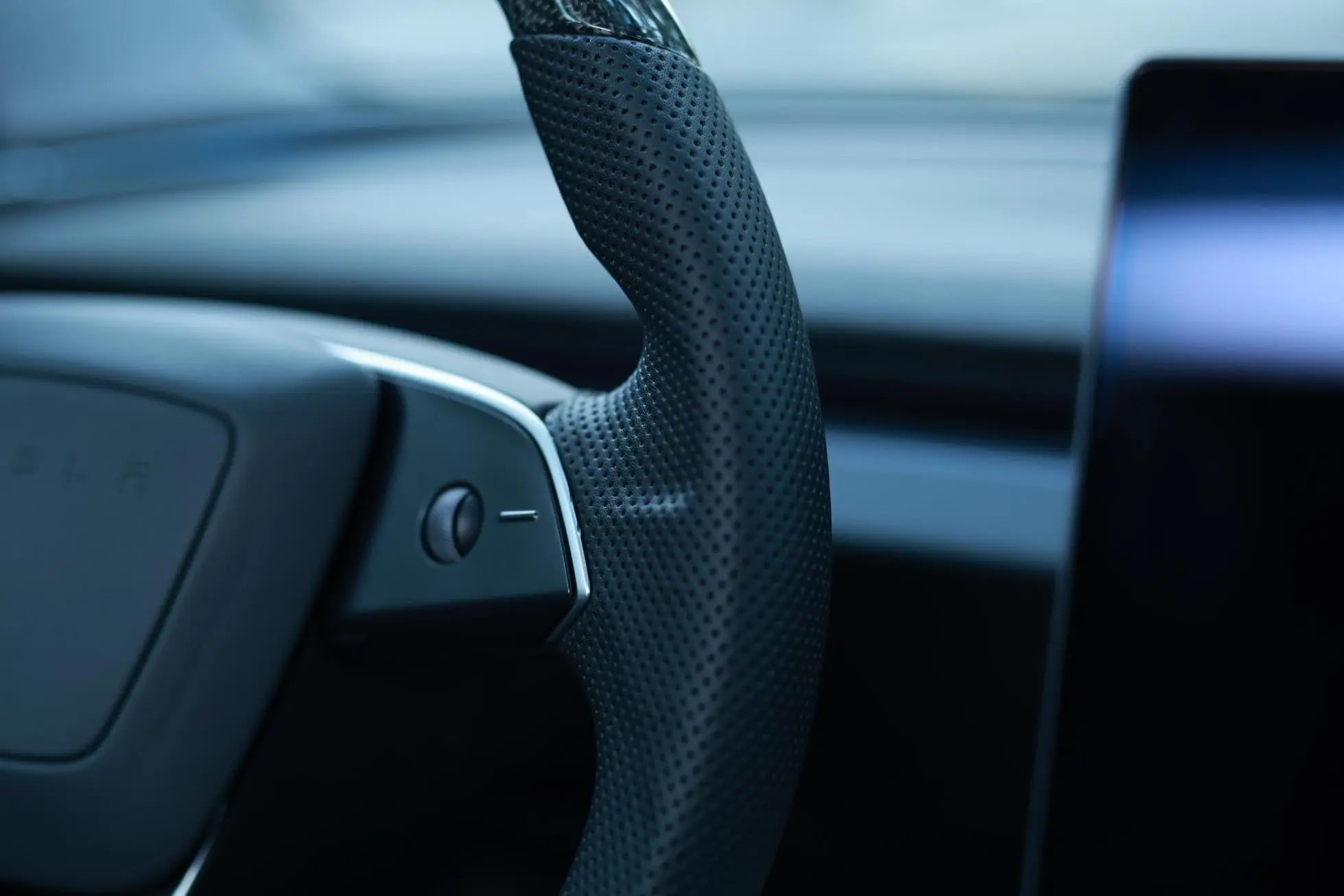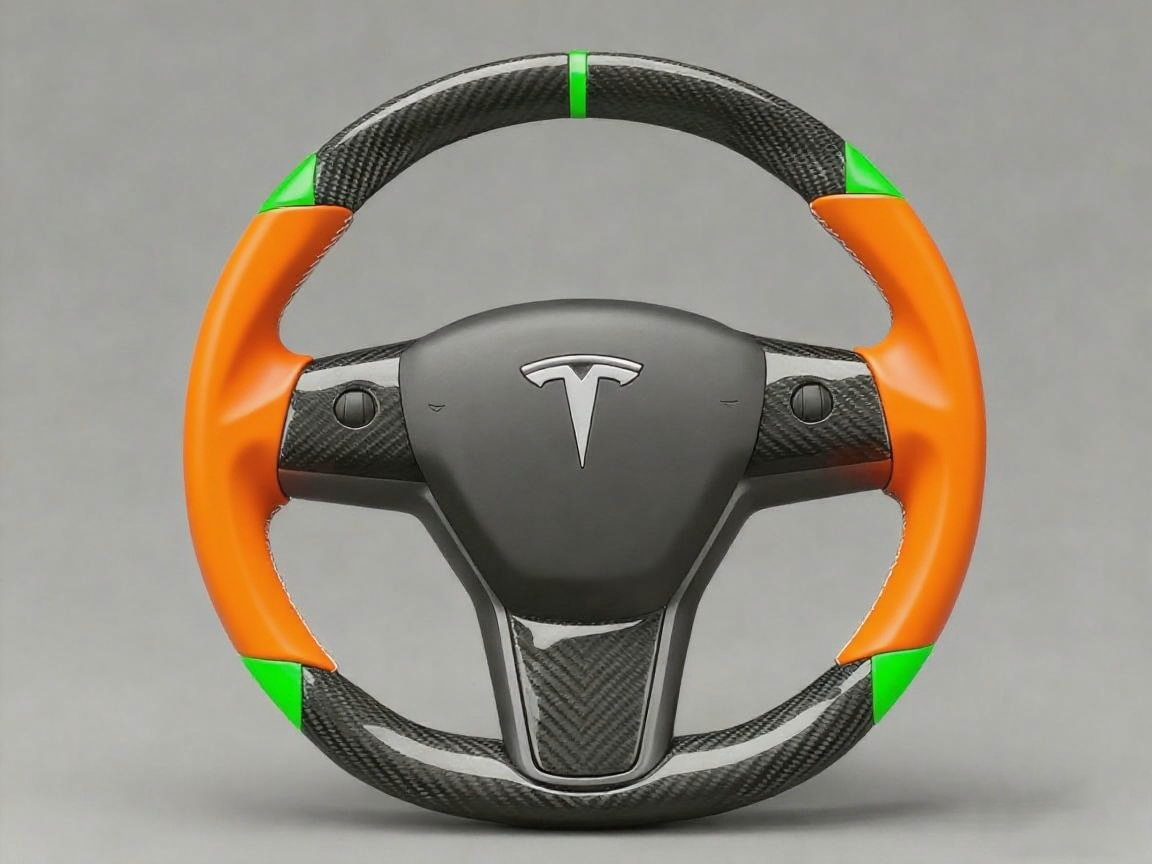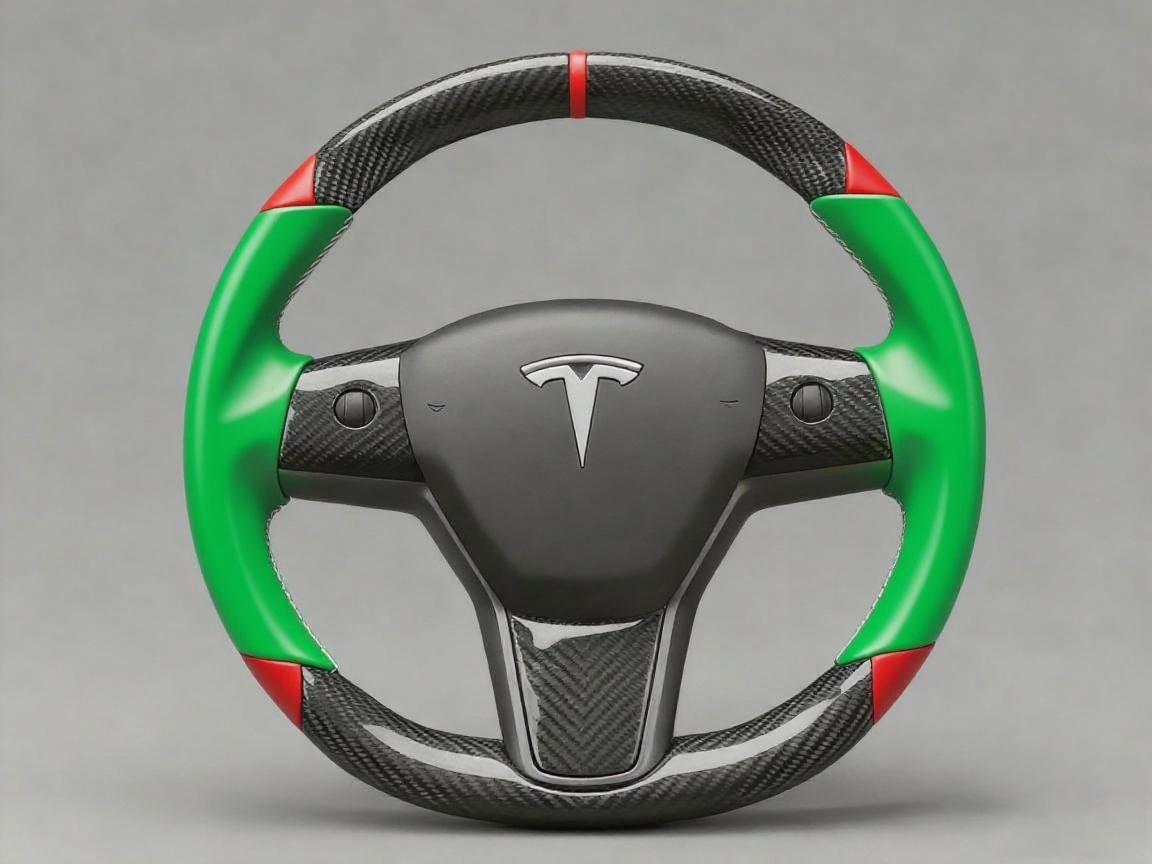In today’s fast-paced world, driving has become an essential activity for millions of people globally. From daily commutes to long-distance travels, drivers spend considerable time behind the wheel, making the steering wheel a crucial element of any vehicle. While most people might think of it as just a tool to steer the car, the steering wheel has a profound impact on driver comfort, control, and overall safety.
Driving for extended periods can take a toll on the body, especially when the design of a vehicle's controls doesn’t support proper posture or ease of use. Among these controls, the steering wheel stands out as the most direct interface between the driver and the vehicle. Overlooking its design could lead to discomfort, fatigue, or even long-term physical ailments. This is where ergonomic principles come into play.
An ergonomically designed steering wheel is crafted with the driver’s comfort, health, and performance in mind. It’s shaped and positioned to ensure minimal strain on the driver’s hands, arms, shoulders, and back. This seemingly small but crucial aspect of vehicle design can make the difference between a comfortable ride and one fraught with physical stress and discomfort.
Understanding Ergonomics
Ergonomics, in the simplest terms, is the science of designing tools, systems, and environments to best suit human capabilities and limitations. When it comes to vehicles, ergonomic design focuses on creating an optimal interface between the driver and the machine to promote efficiency, safety, and comfort.
In the context of steering wheels, ergonomic design addresses the size, shape, texture, and placement of the wheel. It takes into account the range of motion required for effective steering, the natural resting position of the driver’s hands, and the tactile feedback that aids in maintaining control of the vehicle.
Key elements of ergonomics in steering wheel design:
- Comfortable grip: A well-shaped wheel that fits naturally in the hand.
- Proper size and positioning: To minimize the effort needed to turn the wheel.
- Tactile feedback: Textured materials for better control, especially during sharp turns or sudden stops.
The Evolution of Steering Wheel Design
Historically, steering wheels were purely functional—designed with little consideration for driver comfort. Early vehicles featured thin, hard-rimmed wheels, which, while functional, provided minimal comfort and could cause significant fatigue during long drives. However, as car designs evolved, so did the steering wheel.
The incorporation of ergonomic principles began in the late 20th century when designers started prioritizing driver comfort and safety. Modern steering wheels are thicker, padded, and often feature contours or grip sections specifically shaped to fit the natural curve of the hand. Today, steering wheels also integrate multifunctional controls, necessitating a design that supports both comfort and easy access to buttons and levers.
Impact on Driver Comfort
One of the primary benefits of an ergonomically designed steering wheel is enhanced driver comfort. Poorly designed steering wheels force drivers to maintain awkward hand positions or apply unnecessary force during steering. Over time, this can lead to discomfort or even injury.
How ergonomic steering wheels reduce discomfort:
- Natural grip positioning: Contoured steering wheels support natural hand placement, which reduces strain on the wrists and forearms.
- Thicker padding: Soft, cushioned steering wheels help reduce vibrations from the road, minimizing hand fatigue.
- Easy control: Reduced effort required to maneuver the vehicle means less physical exertion during long drives, which is especially crucial for frequent or long-distance drivers.
Health Benefits
Prolonged poor posture while driving can lead to various health issues, including back pain, neck strain, and repetitive stress injuries in the arms and hands. An ergonomically designed steering wheel promotes a healthier posture, minimizing these risks.
Key health benefits include:
- Improved posture: A properly positioned and shaped steering wheel encourages drivers to sit upright, reducing the risk of slouching and the associated strain on the back and neck.
- Reduced strain on joints: Ergonomically designed wheels are easier to handle, which helps reduce the strain on wrists and shoulders, lowering the risk of repetitive strain injuries.
- Enhanced circulation: Maintaining a relaxed grip on an ergonomically designed wheel improves blood circulation in the hands and arms, preventing numbness and discomfort.
Enhanced Vehicle Control
Ergonomically designed steering wheels not only enhance comfort but also improve vehicle control. When a driver is more comfortable and less fatigued, their ability to respond to sudden events—like a sharp turn or an obstacle in the road—improves dramatically.
Key factors for improved control:
- Precise grip: The contoured design provides a better hold, especially during high-speed maneuvers or sudden turns.
- Effortless steering: A well-designed wheel reduces the amount of effort needed to turn the vehicle, which leads to smoother driving and more accurate control.
- Integrated controls: Modern ergonomic wheels often feature integrated buttons and paddles, allowing drivers to access important functions without taking their hands off the wheel.
Safety Considerations
Safety is paramount in vehicle design, and steering wheels play a critical role in road safety. An ergonomically designed steering wheel enhances safety by improving driver focus and reducing the risk of errors caused by fatigue or discomfort.
- Reduced distractions: When the steering wheel is comfortable to hold, drivers can maintain their focus on the road, reducing the likelihood of distractions caused by discomfort.
- Better handling: An ergonomic steering wheel allows for quicker, more precise steering responses, which can be crucial in avoiding accidents.
- Airbag integration: Modern ergonomic steering wheels are designed with airbag deployment in mind, ensuring that the placement and size of the airbag don’t compromise the driver’s safety or comfort.
Ergonomics for Long-Distance Drivers
For professional drivers and those who regularly drive long distances, the importance of ergonomic steering wheels cannot be overstated. Spending hours behind the wheel can lead to serious physical strain if the steering wheel is poorly designed.
Benefits for long-distance drivers:
- Reduced fatigue: Ergonomic designs help drivers maintain a relaxed posture, reducing the risk of fatigue during long trips.
- Lower risk of injury: Long hours behind the wheel increase the risk of repetitive strain injuries, but ergonomic steering wheels help alleviate this by promoting natural hand positions and reducing physical effort.
Influence on Driver Posture
The steering wheel is integral to maintaining good posture while driving. If the wheel is too high, low, or too far away, drivers may slouch or overextend their arms, leading to discomfort and potential injury.
How steering wheel design impacts posture:
- Correct alignment: Ergonomically designed wheels ensure that the arms and shoulders are in a natural, relaxed position, which helps in maintaining proper posture throughout the drive.
- Supportive positioning: Adjustable steering wheels further enhance posture by allowing drivers to customize the wheel's position to suit their body type.
Psychological Impact of Ergonomics
Comfortable steering wheels don’t just affect physical health—they also have a significant psychological impact. Drivers who are more comfortable tend to be more relaxed, focused, and less prone to road rage or stress.
Psychological benefits of ergonomic design:
- Increased focus: Reduced physical discomfort allows drivers to concentrate better on the road, enhancing safety.
- Lower stress levels: Comfortable, well-designed steering wheels help drivers remain calm and composed, even during long or stressful drives.
Steering Wheel Shape and Size
The shape and size of a steering wheel play a crucial role in its ergonomics. From round wheels to D-shaped and flat-bottom designs, the geometry of the steering wheel can affect both comfort and handling.
Importance of shape and size:
- D-shaped wheels: Often found in sports cars, these wheels provide more legroom and are easier to handle during high-speed maneuvers.
- Thicker wheels: Thicker steering wheels are more comfortable to grip and offer better control, especially during sharp turns.
Conclusion
The importance of an ergonomically designed steering wheel cannot be overstated. It not only enhances driver comfort and health but also improves vehicle control and safety. As technology continues to evolve, ergonomic steering wheels will play a critical role in the development of safer, more comfortable driving experiences.
Investing in a vehicle with an ergonomically designed steering wheel is more than just a luxury—it’s a necessity for ensuring both short-term comfort and long-term health benefits.
FAQs
1. Why is an ergonomic steering wheel important for long drives?
An ergonomic steering wheel reduces fatigue by promoting a natural hand position and reducing strain, making it crucial for long-distance driving.
2. Can an ergonomic steering wheel improve vehicle safety?
Yes, ergonomic steering wheels enhance vehicle safety by allowing for better control and quicker responses during emergencies.
3. How does the material of the steering wheel affect ergonomics?
Materials like leather and polyurethane provide a comfortable grip and reduce hand fatigue, which is essential for maintaining control over long drives.
4. Are there specific designs for professional drivers?
Yes, steering wheels designed for professional drivers often feature more adjustability and padding to accommodate extended use and reduce physical strain.
5. How does steering wheel adjustability impact ergonomics?
Adjustability allows drivers to find their optimal driving position, which improves posture, comfort, and overall control of the vehicle.
6. Will future steering wheels become more ergonomic?
Yes, future trends point towards more customizable, touch-sensitive, and adaptive steering wheels that will further enhance ergonomic efficiency.
References
- "Ergonomics and its Role in Modern Vehicle Design." Journal of Automotive Engineering, 2021.
- Smith, J. "The Impact of Steering Wheel Ergonomics on Driver Fatigue." Human Factors Journal, 2020.
- Brown, L. "A Comprehensive Guide to Ergonomic Design in Vehicles." Ergonomics Today, 2019.
- Carter, P. "The Science Behind Steering Wheel Design." Automotive Research, 2018.
- "The Evolution of Steering Wheels: From Functionality to Comfort." Car History Review, 2020.
- Davis, K. "Designing for Comfort: The Ergonomics of Modern Steering Wheels." Vehicle Technology, 2017.
- "How Steering Wheel Design Affects Driver Comfort." Automotive Comfort Studies, 2022.
- Miller, A. "Minimizing Driver Fatigue through Steering Wheel Design." Ergonomic Solutions, 2021.
- Thompson, R. "Preventing Injuries in Long-Distance Driving." Health and Ergonomics Journal, 2020.
- "The Link Between Ergonomics and Vehicle Control." Safety Engineering Reports, 2021.
- Robinson, H. "Improving Vehicle Control with Ergonomically Designed Steering Wheels." Control Systems Weekly, 2019.
- Garcia, M. "The Benefits of Steering Wheel Adjustability." Modern Automotive Design, 2021.
- "Ergonomic Safety in Cars: Steering Wheel Innovations." Automotive Safety Review, 2020.
- O'Neill, B. "The Materials That Define Modern Steering Wheel Comfort." Auto Design Quarterly, 2018.
- "Steering Wheel Adjustability and Ergonomics: A Must for Modern Cars." Driver Experience Journal, 2019.
- "Ergonomic Solutions for Professional Drivers." Transportation Ergonomics Magazine, 2021.
- Johnson, P. "The Future of Ergonomic Design in Automotive Steering." Technology and Innovation, 2022.








